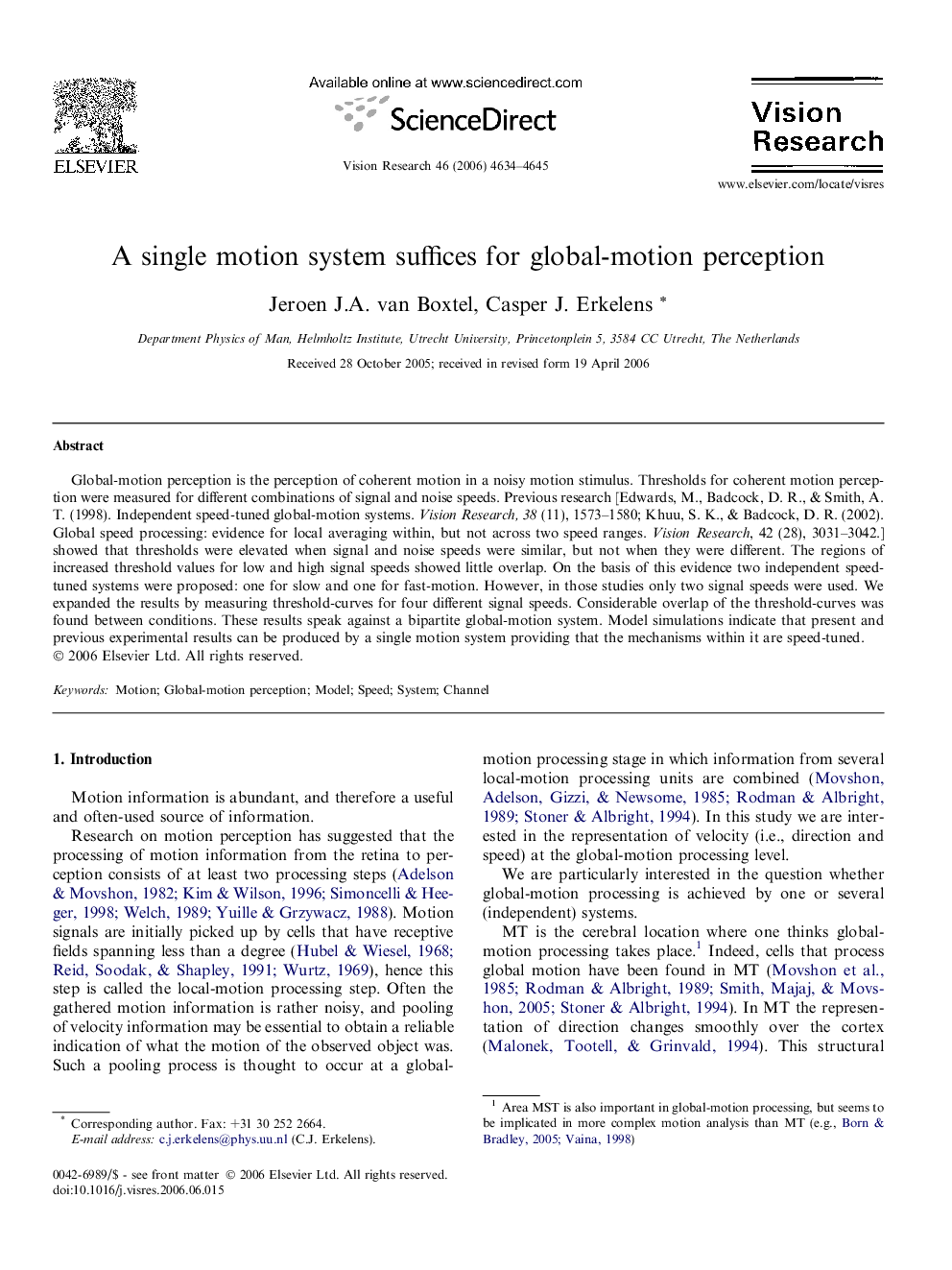| Article ID | Journal | Published Year | Pages | File Type |
|---|---|---|---|---|
| 4035869 | Vision Research | 2006 | 12 Pages |
Global-motion perception is the perception of coherent motion in a noisy motion stimulus. Thresholds for coherent motion perception were measured for different combinations of signal and noise speeds. Previous research [Edwards, M., Badcock, D. R., & Smith, A. T. (1998). Independent speed-tuned global-motion systems. Vision Research, 38 (11), 1573–1580; Khuu, S. K., & Badcock, D. R. (2002). Global speed processing: evidence for local averaging within, but not across two speed ranges. Vision Research, 42 (28), 3031–3042.] showed that thresholds were elevated when signal and noise speeds were similar, but not when they were different. The regions of increased threshold values for low and high signal speeds showed little overlap. On the basis of this evidence two independent speed-tuned systems were proposed: one for slow and one for fast-motion. However, in those studies only two signal speeds were used. We expanded the results by measuring threshold-curves for four different signal speeds. Considerable overlap of the threshold-curves was found between conditions. These results speak against a bipartite global-motion system. Model simulations indicate that present and previous experimental results can be produced by a single motion system providing that the mechanisms within it are speed-tuned.
